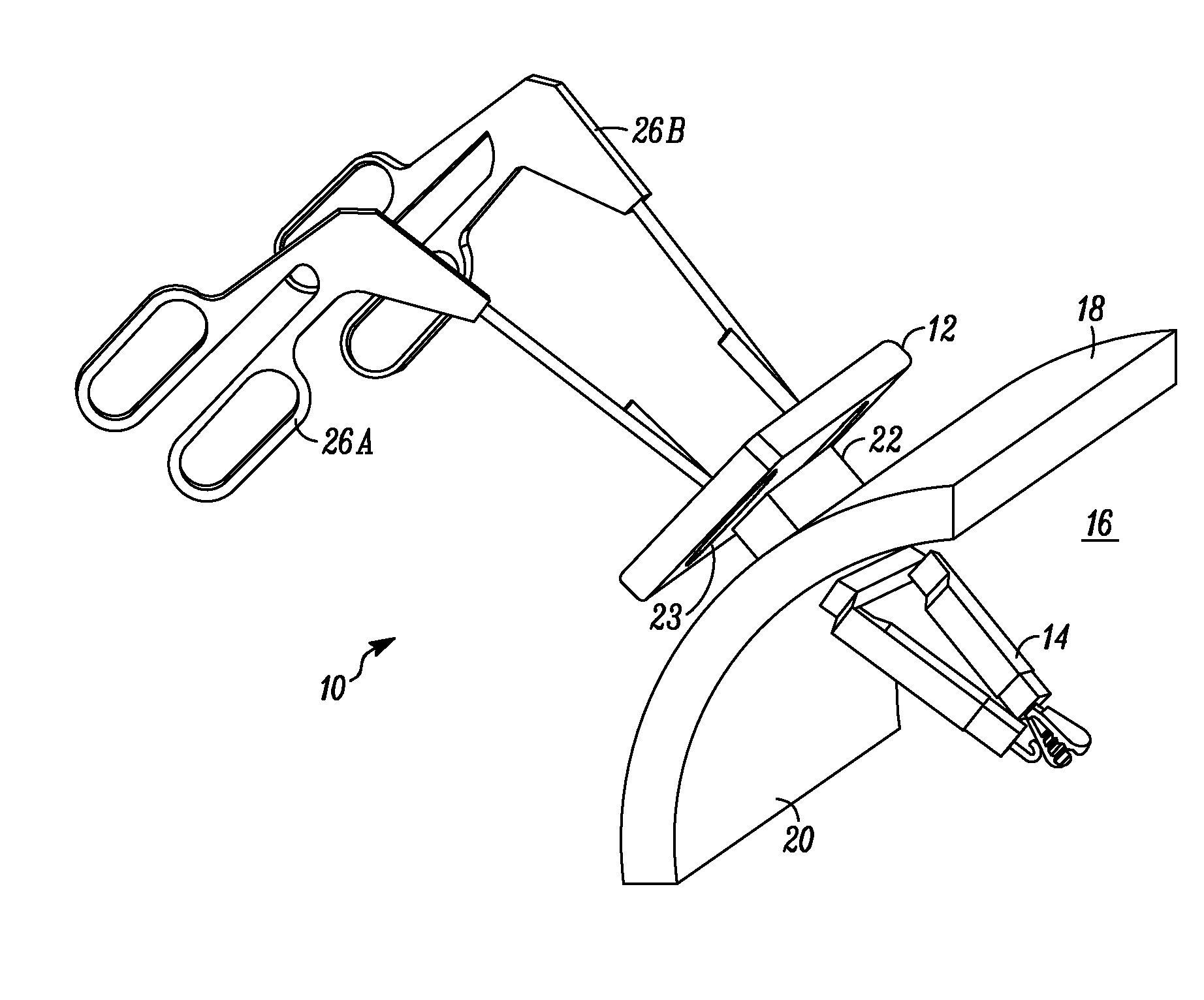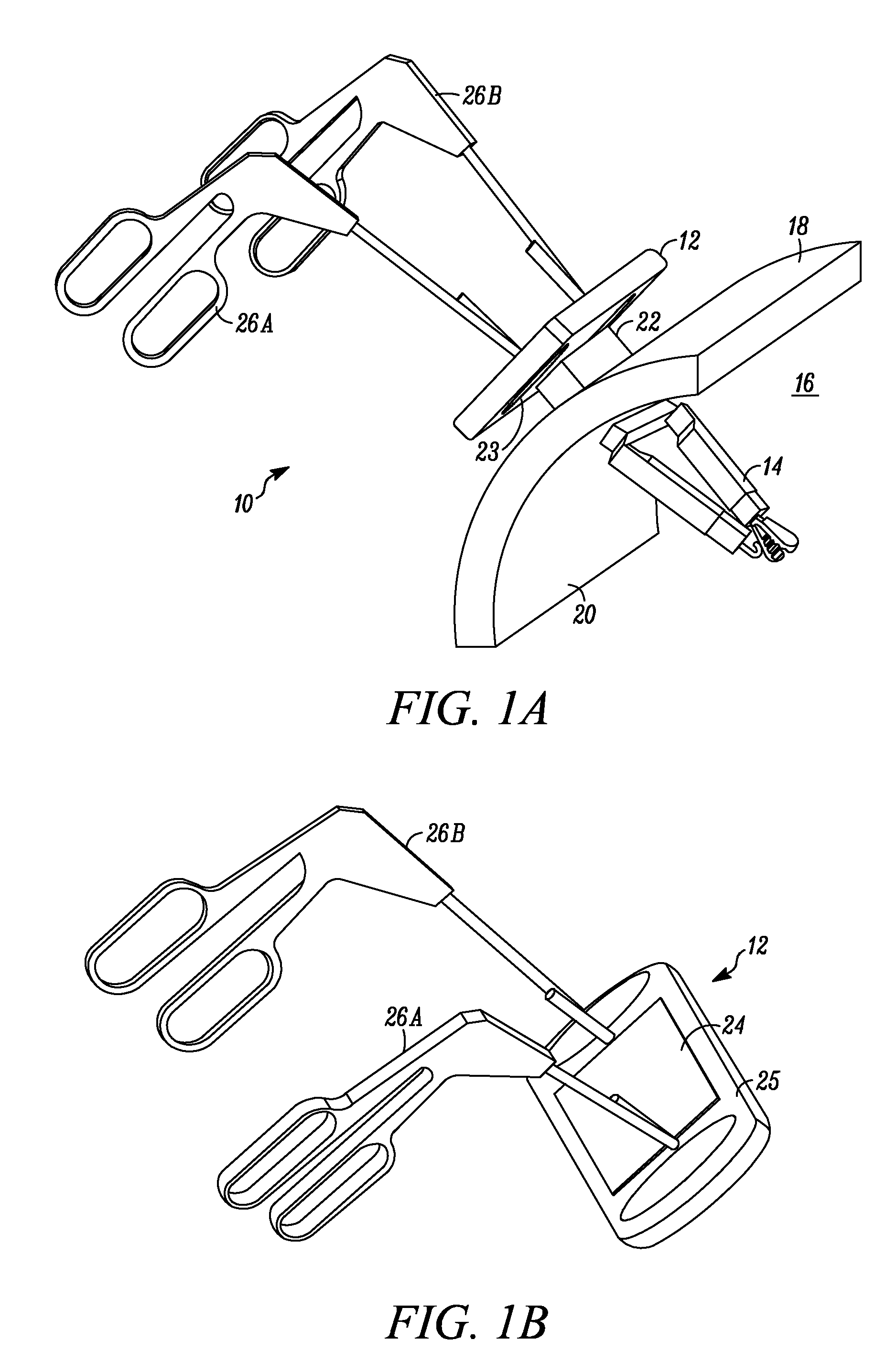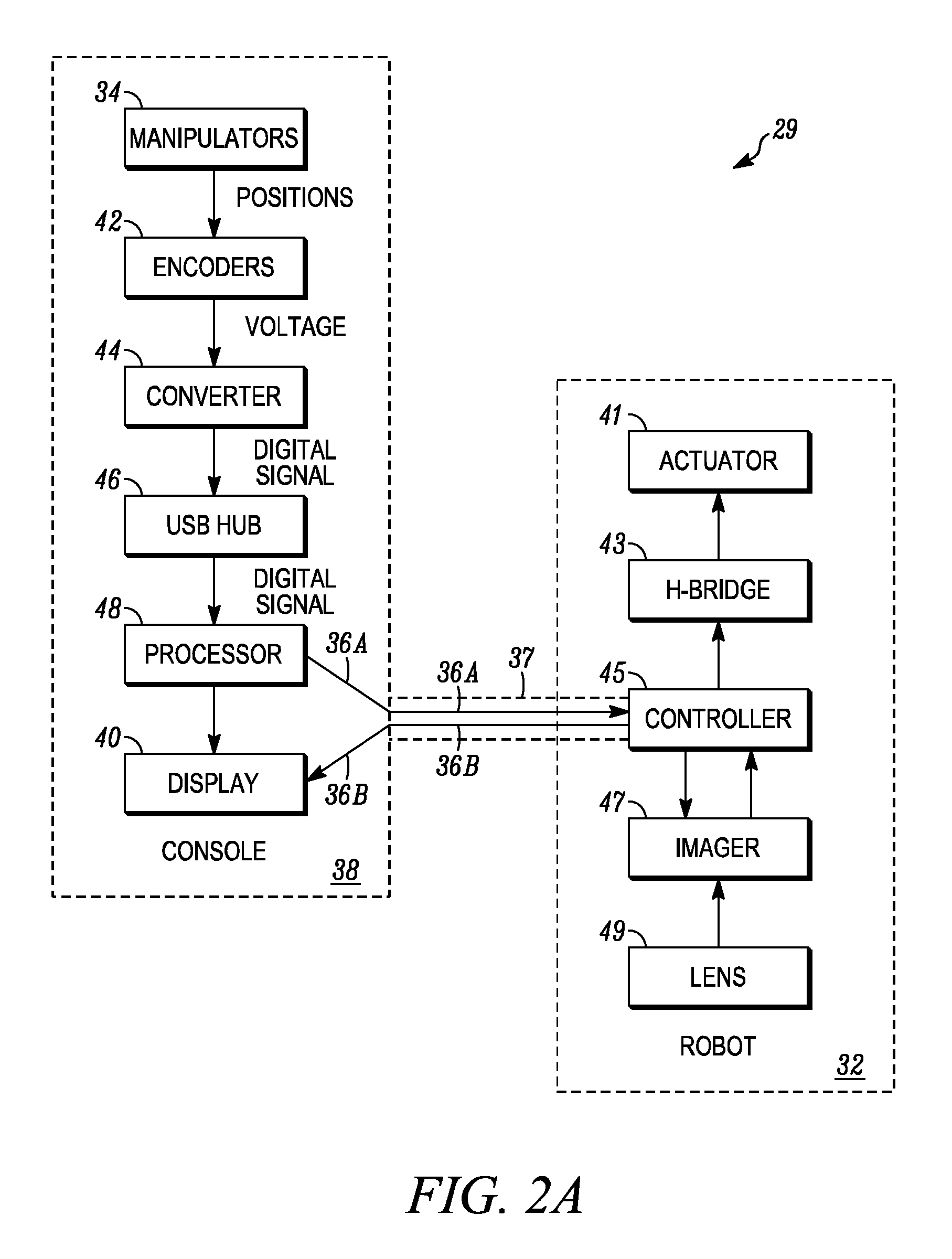Methods, systems, and devices for surgical visualization and device manipulation
a surgical visualization and device technology, applied in the field of surgical visualization and device manipulation, can solve the problems of limited maneuverability of tools, limited surgeon's dexterity and vision, and additional incisions may be required
- Summary
- Abstract
- Description
- Claims
- Application Information
AI Technical Summary
Problems solved by technology
Method used
Image
Examples
example 1
[0117]The following is an exemplary kinematic design of the motion of one embodiment of a NOTES robotic device that can be used with any console as disclosed herein. The design is merely exemplary of one particular embodiment of a robotic device and is not intended to be limiting in any fashion, as any number of robotic devices can be used in conjunction with a console, as discussed above.
[0118]This particular design begins with a kinematic model of the robotic device, as shown in FIG. 15A. Here the kinematic model of the NOTES robot is shown overlaid on the robot schematic in FIG. 15A. The robot is a 2-DOF planar manipulator with a rotational shoulder joint A and prismatic arm B denoted by joint variables θ2 and a2 respectively.
[0119]The Denavit-Hartenberg parameters for the robot are shown in Table 1. The parameter α0 defines the angle of rotation of the robot with respect to a universal frame {0} that is used to introduce gravity. Parameters a1 and a3 are constants defining the b...
example 2
[0130]The following is an exemplary design of the motion of one embodiment of the shoulder joint of a NOTES robotic device. Here, a departure from typical joint designs was required because of a desire to keep the arm in plane with the body of the robotic device. One example of a kinematic model of the shoulder joint of the NOTES robotic device is shown in FIG. 16. In the present mechanism a powerscrew applies a force (Fs) to a slider constrained to move only in the y-direction. The slider mechanism is coupled to the robotic arm (ac) by a link (bd) with rotational degrees of freedom at each end. Length (ab) is constant and defines the length of the arm from the rotation point (a) to the linkage pin (b). Length (ad) represents the distance between the rotation point (a) and the slider (d) Angle θ1 is the angle between (ab) and (ad). For this particular example, link lengths of the model are shown in Equations 8-11.
[0131]ab_=lEquation8ac_=a3maxEquation9ad_=rEquation10bd_=dEqua...
example 3
[0136]The following is an exemplary design of the motion of one embodiment of the manipulators of the console. In this example, laparoscopic tool handles are used to control the movement of the NOTES robotic device. Natural and realistic control of the robotic device was achieved by requiring the laparoscopic tool to rotate about the same point as the robotic arm. This point is shown to be physically the same point; however, this point could be a virtual point. Relative motion with respect to the virtual point when the virtual point is not physically in the same location for both the console and the robotic device would create the same effect.
[0137]In the present example, an “offset planar hinge” similar to that shown in U.S. Pat. No. 5,657,584 was used. The linkage allows the manipulators to rotate about a remote point. An example of an offset planar hinge joint is shown in FIG. 17. The offset planar hinge joint shown in FIG. 17 is similar to offset planar hinge joint shown and des...
PUM
 Login to View More
Login to View More Abstract
Description
Claims
Application Information
 Login to View More
Login to View More - R&D
- Intellectual Property
- Life Sciences
- Materials
- Tech Scout
- Unparalleled Data Quality
- Higher Quality Content
- 60% Fewer Hallucinations
Browse by: Latest US Patents, China's latest patents, Technical Efficacy Thesaurus, Application Domain, Technology Topic, Popular Technical Reports.
© 2025 PatSnap. All rights reserved.Legal|Privacy policy|Modern Slavery Act Transparency Statement|Sitemap|About US| Contact US: help@patsnap.com



